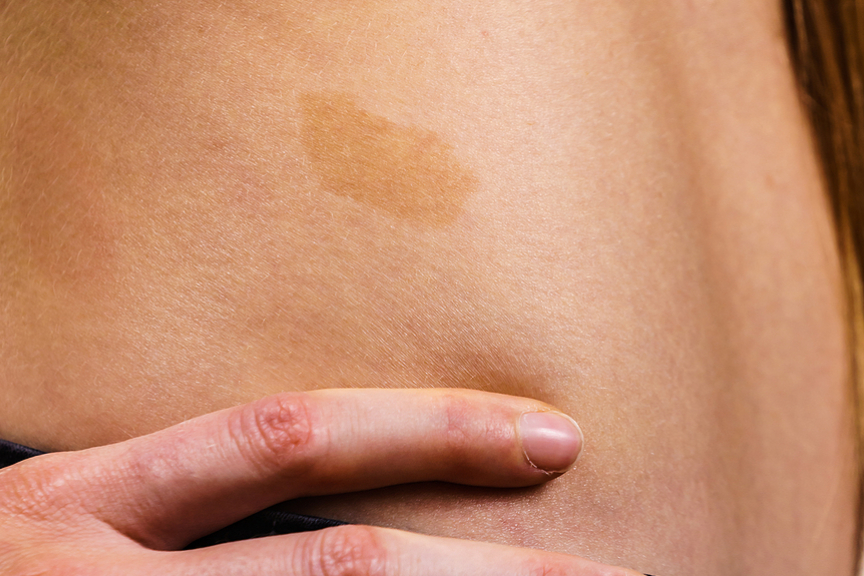Birthmarks are common skin irregularities that appear at or shortly after birth. They can vary in color, shape, size, and location. While many birthmarks are harmless and fade over time, others persist into adulthood and become a cosmetic concern for individuals seeking clearer skin. Birthmarks are generally classified into two categories: vascular (from blood vessels) and pigmented (from melanin). The pigmented types, such as café-au-lait spots, Mongolian spots, and nevus of Ota, are the focus of Dermal Pigmentation Treatment in Dubai. These pigmentation issues are embedded deep within the dermal layer, making them more resistant to topical treatments. That’s where advanced medical procedures play a vital role.
Can Dermal Pigmentation Treatment Reduce Birthmarks?
Yes—depending on the type of birthmark, its depth, and the individual’s skin type, dermal pigmentation treatments can help reduce or significantly fade pigmented birthmarks. While complete removal may not always be possible, many patients experience a dramatic lightening of color and improvement in skin tone with appropriate treatment methods.
Why Pigmented Birthmarks Are Harder to Treat
Unlike superficial pigmentation caused by sun exposure or acne, pigmented birthmarks are genetically driven and deeply embedded in the skin. The melanocytes responsible for these marks are located within the dermis, making them less accessible to topical solutions or surface-level treatments. That's why medical-grade procedures that reach deeper skin layers are required.
Common Types of Pigmented Birthmarks Treated
Dermal pigmentation treatments are particularly effective for the following:
- Café-au-lait spots: Light brown patches that can appear anywhere on the body
- Mongolian spots: Bluish-gray patches, often found on the lower back or buttocks, common in infants
- Nevus of Ota: A bluish discoloration around the eye and cheek area
- Becker’s nevus: A large, dark patch with excess hair growth, often on the shoulders or chest
Each of these has different depths, colors, and treatment responses, but most show improvement with consistent and targeted intervention.
How Dermal Pigmentation Treatments Work on Birthmarks
Because of the dermal depth, specific technologies are used to break down and eliminate pigment:
Laser Therapy
High-energy laser systems like Q-switched Nd:YAG or alexandrite lasers are often the first line of treatment. These lasers target melanin in the dermis without damaging the surrounding skin. Over multiple sessions, the pigment is broken down and absorbed by the body, resulting in a gradual fading of the birthmark.
Fractional Lasers
In cases where both pigmentation and skin texture are concerns, fractional lasers can treat deeper layers while stimulating collagen renewal. This dual action helps improve overall skin appearance.
Microneedling with Pigment-Fading Serums
While less commonly used for birthmarks, microneedling combined with active serums may enhance outcomes in some lighter cases, especially when used as a secondary support to laser treatment.
Treatment Sessions and Expectations
- Multiple sessions are usually required, spaced about 4–6 weeks apart
- Gradual lightening is observed after each session
- Mild swelling, redness, or flaking may occur post-treatment and typically resolves in a few days
- Sun protection is absolutely critical to prevent re-darkening
It’s important to note that some birthmarks, especially larger or darker ones, may require ongoing maintenance even after initial improvement.
Suitability and Limitations
Not all pigmented birthmarks will respond equally to treatment. The effectiveness depends on:
- Type of birthmark
- Depth of melanin
- Color contrast with surrounding skin
- Skin tone and sensitivity
In some cases, complete removal may not be realistic, but significant fading is often achievable and can lead to meaningful cosmetic improvements.
Risks and Side Effects
When done correctly by qualified professionals, dermal pigmentation treatments are generally safe. However, potential risks include:
- Temporary skin irritation
- Post-inflammatory hyperpigmentation in darker skin types
- Recurrence of pigmentation if underlying triggers aren’t managed
These risks can be minimized with proper pre- and post-care, including sun avoidance and the use of prescribed skin-calming agents.
Aftercare for Long-Lasting Results
To prolong the benefits of treatment and prevent any recurrence of pigmentation, follow these precautions:
- Use SPF 50+ daily, even on cloudy days
- Avoid picking, rubbing, or scratching the treated area
- Stay away from direct sun exposure, especially during peak hours
- Follow all professional skin care instructions precisely
- Maintain hydration and barrier repair with recommended moisturizers
Conclusion
Dermal Pigmentation Treatment Dubai offers a promising path for individuals looking to fade pigmented birthmarks that don’t respond to traditional methods. While results vary based on individual factors, many people in Dubai are seeing visible improvements in their skin with the help of advanced, targeted procedures. If you’re living with a birthmark that affects your confidence or appearance, professional treatment might be the key to revealing a clearer, more even skin tone.






Comments